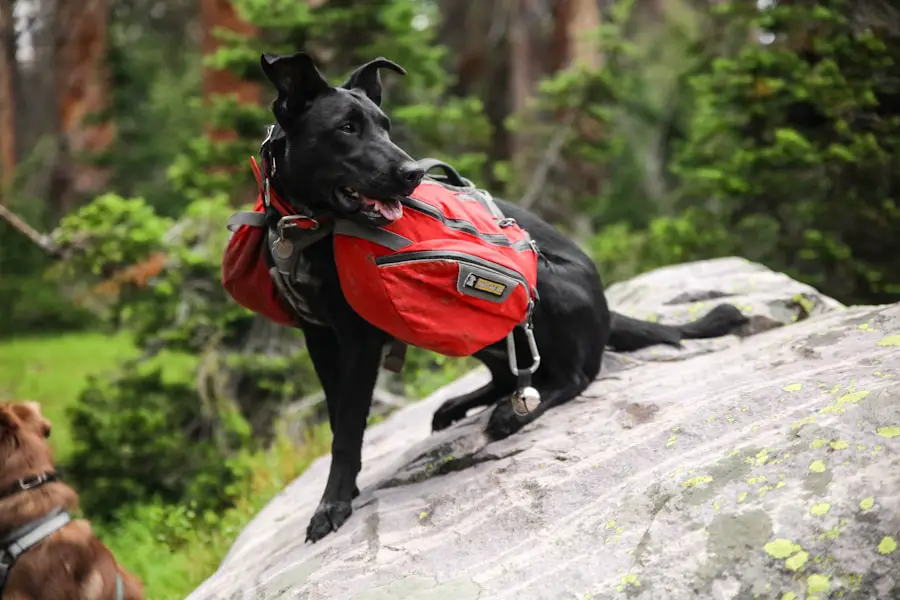At four months old, a puppy is in a critical stage of physical development. This period is characterized by rapid growth, where the puppy’s body is undergoing significant changes. Typically, a puppy at this age will have gained a considerable amount of weight since birth, often reaching about 30% of its expected adult weight.
The skeletal system is still developing, and the bones are relatively soft, making them susceptible to injury if subjected to excessive strain. This is particularly important for larger breeds, which may be more prone to developmental issues if they engage in high-impact activities too early. During this stage, a puppy’s coordination and motor skills are also improving.
They begin to exhibit more agility and strength, which allows them to explore their environment with greater confidence. Playtime becomes more vigorous, and puppies often engage in running, jumping, and wrestling with their littermates or human companions. This physical play is essential not only for muscle development but also for socialization and learning appropriate behaviors.
However, it is crucial to monitor their activity levels to prevent overexertion, as their stamina is still developing.
Key Takeaways
- A 4-month-old puppy will experience rapid physical development, including growth spurts, increased coordination, and the development of adult teeth.
- When considering taking a puppy hiking, it’s important to factor in the breed, size, and overall health of the puppy, as well as the terrain and weather conditions of the hiking trail.
- Training and socialization are crucial for preparing a puppy for hiking, including leash training, exposure to different environments, and interaction with other dogs and people.
- Health and safety precautions for hiking with a puppy include ensuring they are up to date on vaccinations, protecting them from ticks and other pests, and monitoring their energy levels and hydration.
- Essential gear and supplies for hiking with a puppy include a well-fitted harness, a leash, collapsible water bowl, plenty of water, high-quality dog food, and a first aid kit.
Considerations for Taking a Puppy Hiking
When considering taking a puppy hiking, several factors must be taken into account to ensure a safe and enjoyable experience for both the puppy and the owner. First and foremost, the age and physical condition of the puppy should be evaluated. At four months old, while puppies are generally energetic and curious, they may not yet have the endurance required for long hikes.
Shorter trails with gentle inclines are ideal for young puppies, allowing them to explore without becoming overly fatigued. Another important consideration is the puppy’s breed and size. Some breeds are more suited for hiking than others due to their energy levels and physical capabilities.
For instance, high-energy breeds like Border Collies or Labrador Retrievers may thrive on hiking adventures, while smaller or less active breeds may struggle with the demands of rugged terrain. Additionally, the weather conditions should be assessed before heading out; extreme heat or cold can pose risks to a young puppy’s health. Ensuring that the hike is appropriate for the puppy’s age, breed, and current health status is essential for a positive experience.
Training and Socialization for Hiking

Training and socialization are critical components of preparing a puppy for hiking adventures. Before embarking on a hike, it is essential to establish basic obedience commands such as “sit,” “stay,” “come,” and “leave it.” These commands can help manage the puppy’s behavior in various situations encountered on the trail, such as meeting other hikers or encountering wildlife. Positive reinforcement techniques, such as treats and praise, can be effective in teaching these commands and ensuring that the puppy associates hiking with positive experiences.
Socialization is equally important for a puppy’s development. Exposing the puppy to different environments, sounds, and people can help build confidence and reduce anxiety during hikes. Gradually introducing the puppy to various terrains—such as grass, gravel, or dirt paths—can help acclimate them to the sensations they will encounter on a hike.
Additionally, arranging playdates with other dogs can enhance social skills and teach appropriate interactions with fellow canines on the trail.
Health and Safety Precautions for Hiking with a Puppy
| Health and Safety Precautions for Hiking with a Puppy |
|---|
| 1. Vaccinations |
| 2. Leash and Collar |
| 3. Identification Tags |
| 4. Water and Food |
| 5. Rest Breaks |
| 6. Weather Conditions |
| 7. Terrain |
| 8. First Aid Kit |
Health and safety precautions are paramount when hiking with a young puppy. One of the first steps is to ensure that the puppy is up-to-date on vaccinations and has received appropriate preventive care against parasites such as ticks and fleas. Puppies are particularly vulnerable to certain diseases, so consulting with a veterinarian before embarking on outdoor adventures is advisable.
The vet can provide guidance on vaccinations and any additional precautions that may be necessary based on the hiking location. Hydration is another critical aspect of health during hikes. Puppies can become dehydrated quickly, especially in warm weather or during strenuous activity.
Carrying fresh water in a portable dog bowl is essential to keep the puppy hydrated throughout the hike. Additionally, monitoring the puppy for signs of fatigue or overheating is crucial; if the puppy shows signs of excessive panting or lethargy, it may be time to take a break or cut the hike short. Being vigilant about these health considerations can help ensure a safe hiking experience.
Gear and Supplies for Hiking with a Puppy
Equipping a puppy with the right gear and supplies is essential for a successful hiking trip. A well-fitted harness is often preferable to a collar for young puppies, as it provides better control and reduces strain on their necks during walks. Many harnesses come with reflective materials for added visibility in low-light conditions, which can be beneficial if hiking during dawn or dusk.
In addition to a harness, other supplies should include a sturdy leash that allows for some flexibility while maintaining control over the puppy. A lightweight backpack designed for dogs can also be useful for carrying essentials such as water bottles, collapsible bowls, treats, and waste bags. It’s important to pack light but ensure that all necessary items are included to cater to the puppy’s needs during the hike.
A first-aid kit specifically designed for pets can also be invaluable in case of minor injuries or emergencies.
Choosing the Right Hiking Trails for a Puppy

Selecting appropriate hiking trails is crucial when planning an outing with a young puppy. Ideally, trails should be well-maintained and not overly challenging in terms of elevation or terrain. Flat or gently sloping paths are ideal for puppies still developing their strength and endurance.
Additionally, trails that are less crowded can provide a more relaxed environment for both the puppy and its owner. Researching local trails ahead of time can help identify those that are dog-friendly and have amenities such as water sources or rest areas. Some parks even have designated dog trails that cater specifically to canine hikers.
It’s also wise to consider the length of the trail; shorter hikes of one to two miles are generally suitable for puppies at this age, allowing them to enjoy the experience without becoming overwhelmed or exhausted.
Tips for a Successful Hiking Trip with a Puppy
To ensure a successful hiking trip with a puppy, preparation is key. Before heading out, it’s beneficial to familiarize the puppy with its gear at home. Allowing them to wear their harness and leash in a comfortable setting can help reduce anxiety when it’s time to hit the trail.
Additionally, practicing basic commands in various environments can reinforce training and build confidence. During the hike itself, frequent breaks should be incorporated into the itinerary. Puppies may need more rest than adult dogs due to their developing bodies; taking time to hydrate and allow them to explore their surroundings can enhance their enjoyment of the experience.
Keeping an eye on their energy levels is essential; if they seem tired or disinterested in continuing, it’s best to turn back rather than push them beyond their limits. Lastly, capturing moments through photos can create lasting memories of these early adventures together.
Alternatives to Hiking for Young Puppies
While hiking can be an exciting adventure for older dogs, young puppies may benefit from alternative activities that cater to their developmental needs without overwhelming them physically. Engaging in short walks around the neighborhood allows puppies to explore new sights and sounds while building their stamina gradually. These walks can be tailored in length based on the puppy’s energy levels and comfort.
Another excellent alternative is visiting dog parks where puppies can socialize with other dogs in a controlled environment. This setting provides opportunities for play and interaction without the physical demands of hiking on rugged terrain. Additionally, engaging in interactive games such as fetch or tug-of-war in a safe space can help develop coordination and strengthen bonds between the puppy and its owner while keeping activities fun and low-impact.
These alternatives ensure that young puppies receive adequate exercise and socialization while respecting their developmental stage.
If you are considering taking your 4-month-old puppy hiking, it is important to be prepared and informed about the potential challenges and considerations. One helpful article to read before embarking on this adventure is “Best Time to Travel to Santa Fe: A Seasonal Guide”. This article provides valuable information on the best times to visit Santa Fe, taking into account weather conditions and seasonal activities. Just like planning a trip, hiking with a young puppy requires careful planning and consideration to ensure a safe and enjoyable experience for both you and your furry companion.
FAQs
Is it safe to take my 4 month old puppy hiking?
Yes, it can be safe to take a 4 month old puppy hiking as long as certain precautions are taken and the puppy is physically capable of handling the activity.
What precautions should I take when taking my 4 month old puppy hiking?
Some precautions to take when taking a 4 month old puppy hiking include ensuring the puppy is up to date on vaccinations, bringing plenty of water and food for the puppy, and monitoring the puppy’s behavior and energy levels.
How far can I hike with my 4 month old puppy?
The distance a 4 month old puppy can hike will vary depending on the breed, size, and overall health of the puppy. It’s important to start with shorter hikes and gradually increase the distance as the puppy builds endurance.
What signs should I look for to know if my 4 month old puppy is getting tired during a hike?
Signs that a 4 month old puppy is getting tired during a hike include lagging behind, excessive panting, and reluctance to continue walking. It’s important to take frequent breaks and monitor the puppy’s behavior closely.
Are there any specific hiking gear or accessories I should have for my 4 month old puppy?
Some hiking gear and accessories to have for a 4 month old puppy include a well-fitted harness, a leash, collapsible water bowls, and dog booties to protect their paws from rough terrain.
